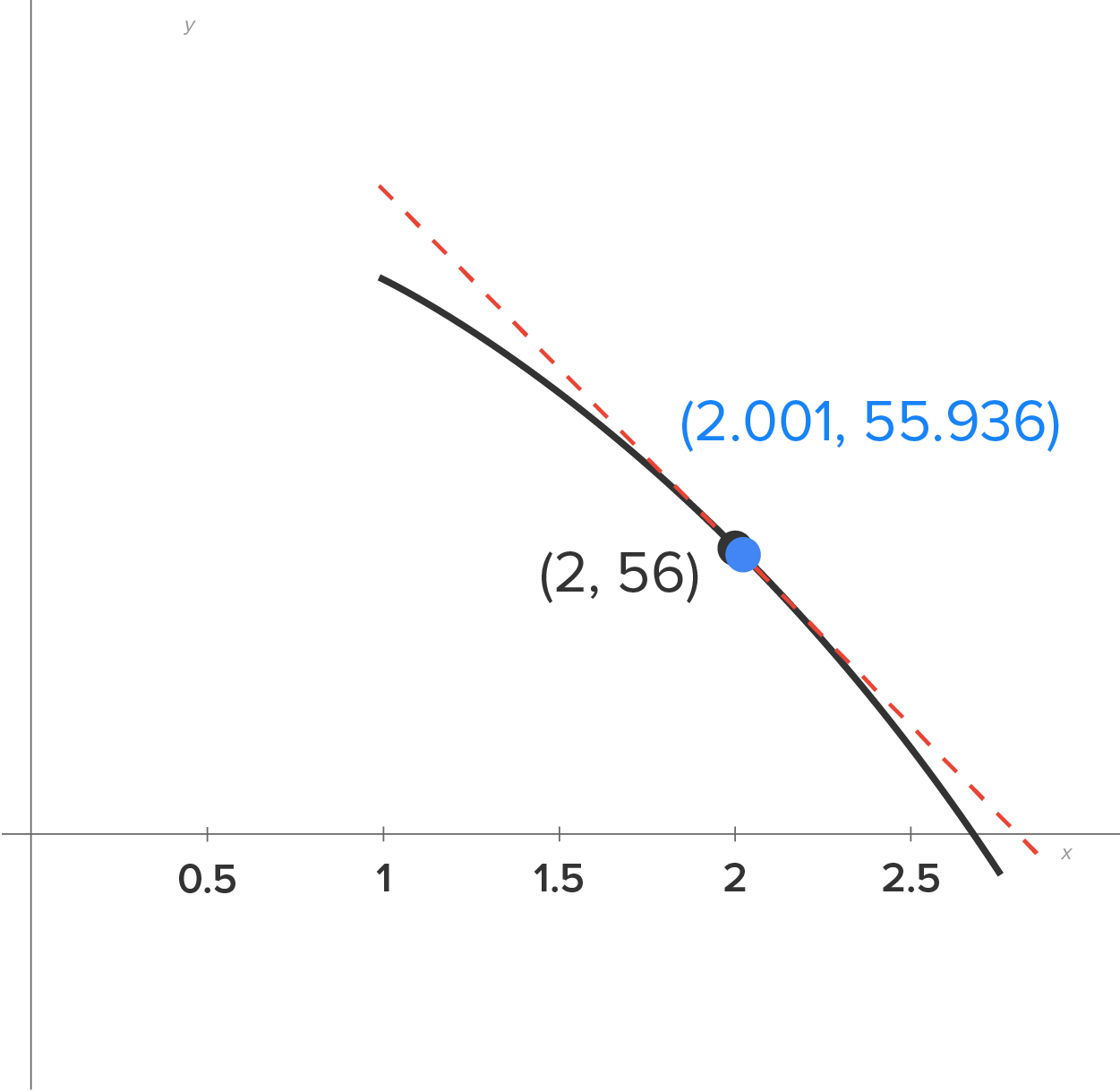Table of Contents |
In the last section, we computed average rates of change, which require an interval of time. What if we want to compute the instantaneous rate of change, which is the rate of change at one specific point?
Let’s say a tennis ball is dropped off the top of a building. Its height after t seconds is described by the function  Suppose we want to find the instantaneous rate of change at the instant that 2 seconds have passed.
Suppose we want to find the instantaneous rate of change at the instant that 2 seconds have passed.
To see if we can find a pattern, let’s find average rates of change on small intervals of time starting with 
| Interval | Length of Interval | Average Rate of Change |
|---|---|---|

|
0.1 seconds |
 ft/sec ft/sec
|

|
0.01 seconds |
 ft/sec ft/sec
|

|
0.001 seconds |
 ft/sec ft/sec
|
Notice that as the length of the interval decreases, the average rate of change seems to be approaching a value. It is safe to estimate the instantaneous rate of change as -64 ft per second (we will see later that this is the actual answer).

Let’s examine the curve  and the secant line for the interval
and the secant line for the interval  (The curve is solid; the secant line is dashed).
(The curve is solid; the secant line is dashed).
Notice that the two points are nearly indistinguishable.
Furthermore, the secant line appears to only pass through one point instead of two (remember, because they are so close together), so the secant line actually looks like a tangent line!
The problem we just completed in the previous section can be generalized by finding the average rate of change in  over the interval
over the interval  for small values of h.
for small values of h.
Since the instantaneous rate of change is the result of letting h get smaller and smaller, here is our plan to find the instantaneous rate of change for 


 and
and 



 This gives
This gives  ft/sec.
ft/sec.
 at
at  follow these steps.
follow these steps.

 to get the instantaneous rate of change.
to get the instantaneous rate of change.EXAMPLE
Compute the instantaneous rate of change of when
when  We know the average rate of change is
We know the average rate of change is 


 The instantaneous rate of change is
The instantaneous rate of change is 


 when
when 
 at that specific point. You also learned how to compute the instantaneous rate of change, which enables you to calculate instantaneous velocity at a specific point in time.
at that specific point. You also learned how to compute the instantaneous rate of change, which enables you to calculate instantaneous velocity at a specific point in time.
Source: THIS TUTORIAL HAS BEEN ADAPTED FROM CHAPTER 1 OF "CONTEMPORARY CALCULUS" BY DALE HOFFMAN. ACCESS FOR FREE AT WWW.CONTEMPORARYCALCULUS.COM. LICENSE: CREATIVE COMMONS ATTRIBUTION 3.0 UNITED STATES.